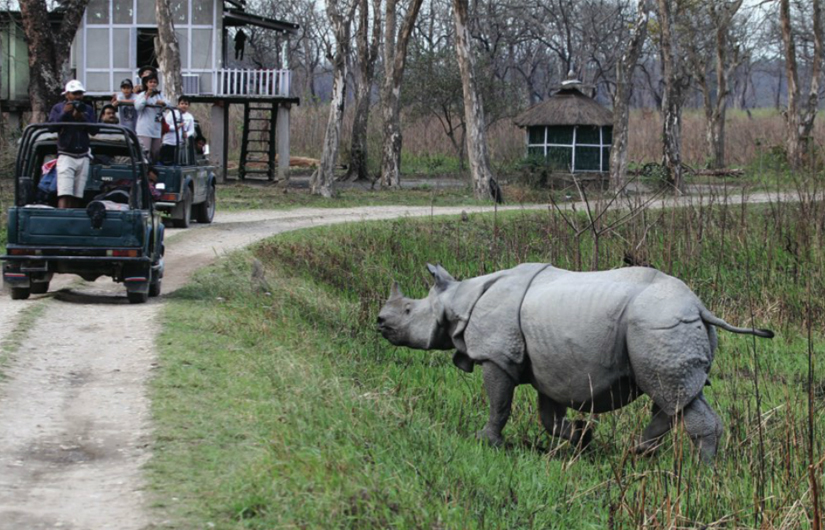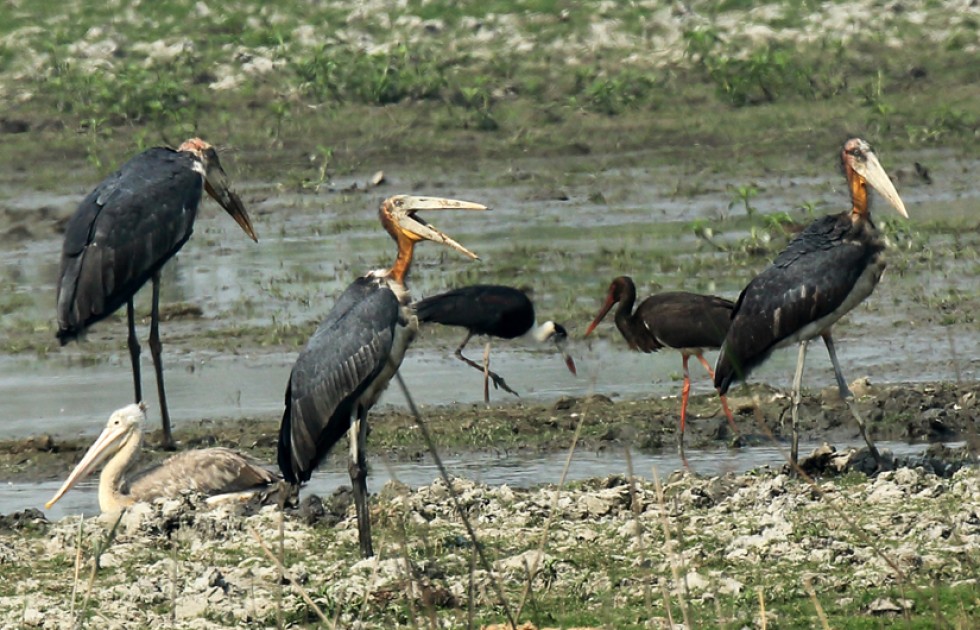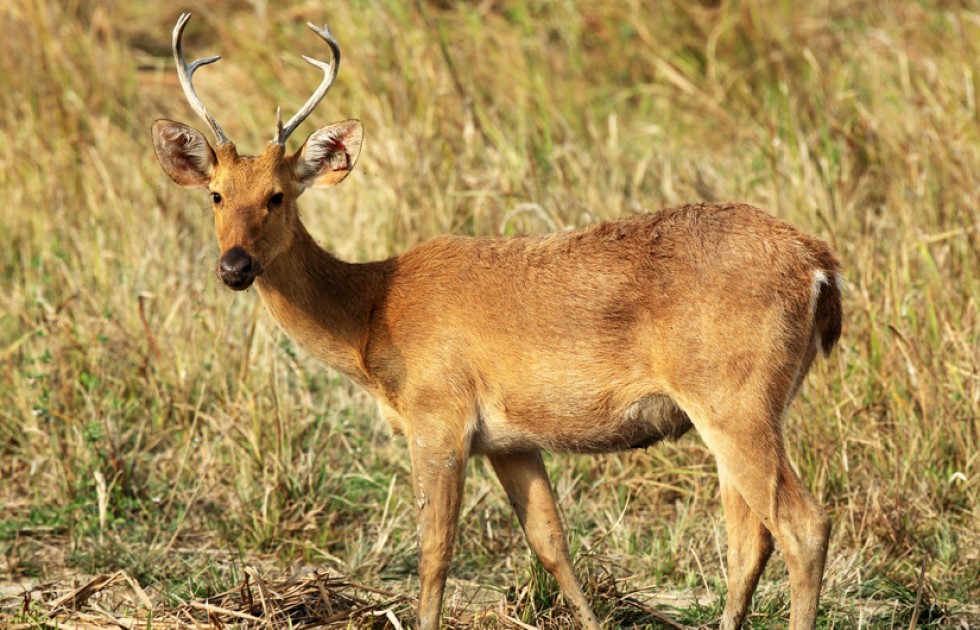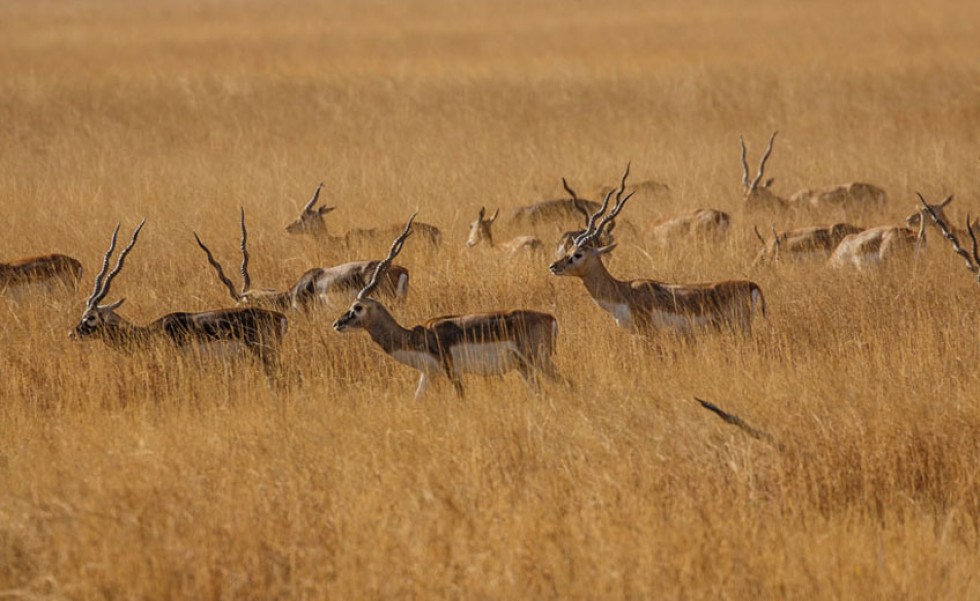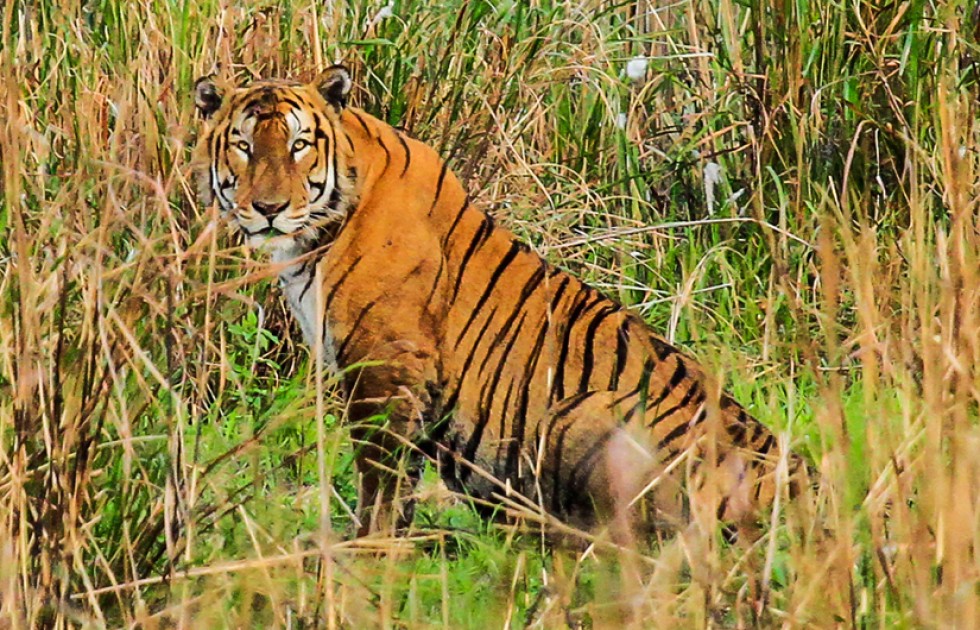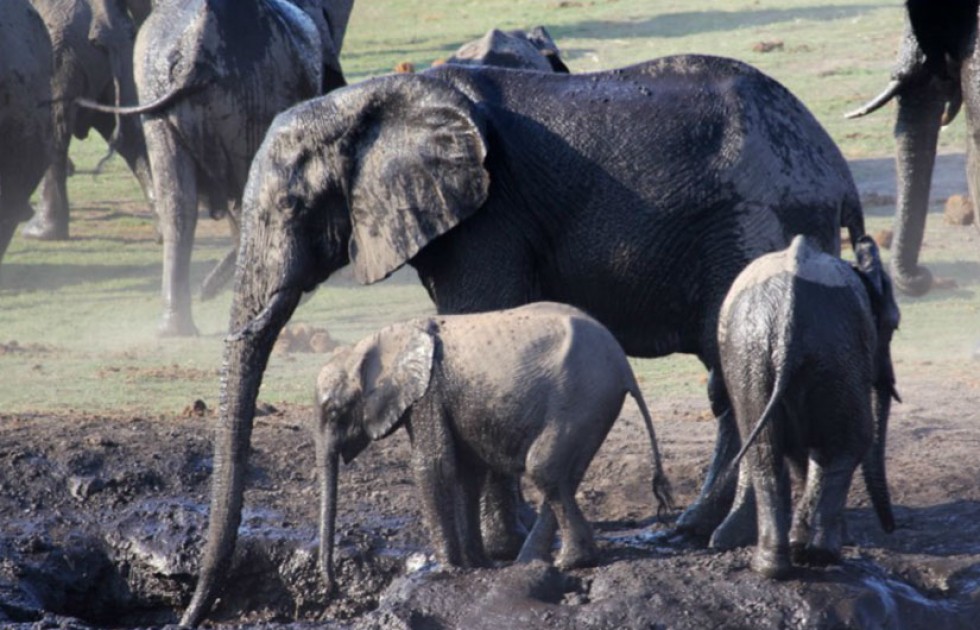AN ASSAM ADVENTURE
There are excellent wildlife safaris to be found outsideAfrica, such as in India’s spectacular KazirangaNational Park
During the 10 years of my new career as a producer and host of a TVdocumentary program on world heritage sites, I’ve made several filmingtrips to well-known safari destinations in Africa such as Masai Mara National Reserve in Kenya, Serengeti National Park in Tanzania, Etosha National Parkin Namibia, Chobe National Park in Botswana, and Kruger Park in South Africa. Then one day while researching on the natural world heritage sites of India, my attention was drawn to Kaziranga National Park in the State of Assam, a UNESCO world heritage site since 1985. My interest grew when I discovered Kaziranga was one of the world’s best reserves for the Bengal tiger, one of my targets as a wild life photographer.
Kaziranga National Park, declared a tiger reserve in 2006, occupies an area of 378 square kilometers of tall elephant grass, marshland, and forest,intersected by four rivers including the famous Brahmaputra. While Africa has its Big Five, namely African elephant, lion, rhinoceros (black and white),African buffalo, and leopard, Kaziranga features its Kaziranga Five: Asianelephant, Bengal tiger, greater one-horned rhinoceros (Indian rhinoceros),Asiatic wild water buffalo, and swamp deer. The International Union of Conservation of Nature (IUCN) has classified the Kaziranga Five as threatened species. Asian elephant, Bengal tiger, and Asiatic wild water buffalo are listed as endangered, while greaterone-horned rhinoceros and swamp deer have vulnerable status. Kaziranga claims to possess two-thirds ofthe world’s greater one-hornedrhinoceroses and to have the highest density of Bengal tigers among protected area in the world.
Under a local’s guidance, we were able to see four Bengal tigers, including the one in the two photoshere. Palash spotted a tiger from afar resting in a field of tall elephant grass on a late afternoon, before making the daily patrol of its territory. We parkedon a dirt road about a hundred metersaway, waiting patiently. The tiger thenmade a move, disappearing into thegrass. Palash, knowing tigers to becreatures of habit, took us to a near by spot on a dirt road and told us that he saw tigers crossing the road here 9 times already. We parked about 200 meters away, and 10 minutes later the tiger suddenly appeared on the edge of the road. The crossing was quick, less than five seconds, and the
The third Kaziranga Five I saw was greater one-horned rhinoceros, also known as Indian rhinoceros, found mostly in northern India and southern Nepal, with a concentration of around2,000 individuals in Kaziranga.It differs from African white and black rhinos that have two horns. The greater one-horned rhino does not use its single horn as a weapon to defend itself, using instead its sharp teeth to bite off chunks of flesh. It can run at a speed of up to 55 km per hour for as hort period and is also an excellent swimmer. It has very sharp hearing and smell but poor eyesight. The Indian rhino is also a creature ofhabit, regularly following the same walking path, crossing the road at the same spot, and defecating at the same place. It is a grazer, its diets mostly grasses and leaves, branches of shrubsand trees, and aquatic plants.
Asiatic wild water buffalo, the fourth Kaziranga Five we saw, is estimated to number about 3,000 globally and is declining steadily due to habitat loss, cattle grazing, and breeding with domestic buffalo. Its habitats are grasslands and marshes in India, Nepal, Bhutan, Thailand, and Cambodia. The largest number, about1,200, is found in Kaziranga. It is considered one of the most dangerous animals to encounter. When threatened,it snorts, stomps its feet, and shake its head as it prepares to charge.
The last of the Kaziranga Five we saw was the swamp deer, which is distinguishable from other Indian deer by the famous antlers of the male. It is known in Hindi as barasingha because of its antlers with up to twelve-tined, and is the state animal of Madhya Pradesh. The average male, or stag, has antlers with over three times, while the hind, or female has noantlers. Antlers can be 76 cm around the curve with a girth of 13 cm at mid beam.
For those seeking adventurous safari destinations other than Africaand looking for Asian wildlife, I can strongly recommend Kaziranga National Park in Assam, India.


